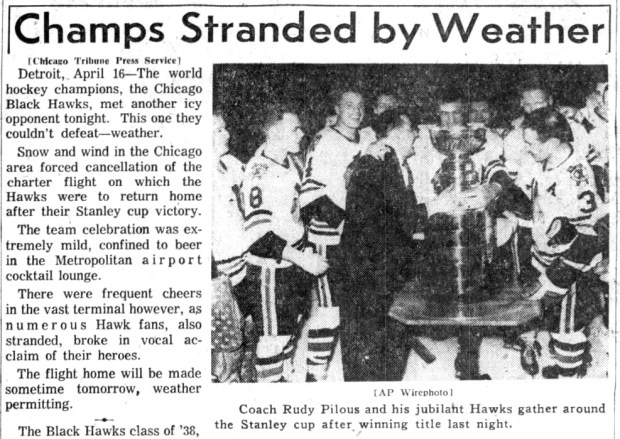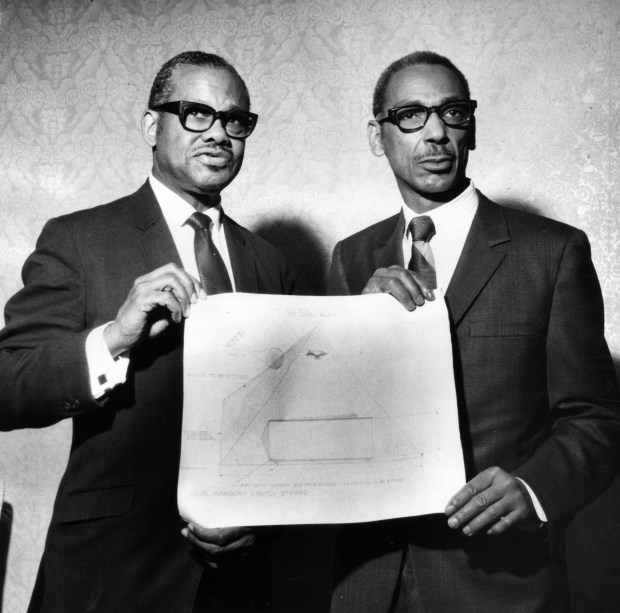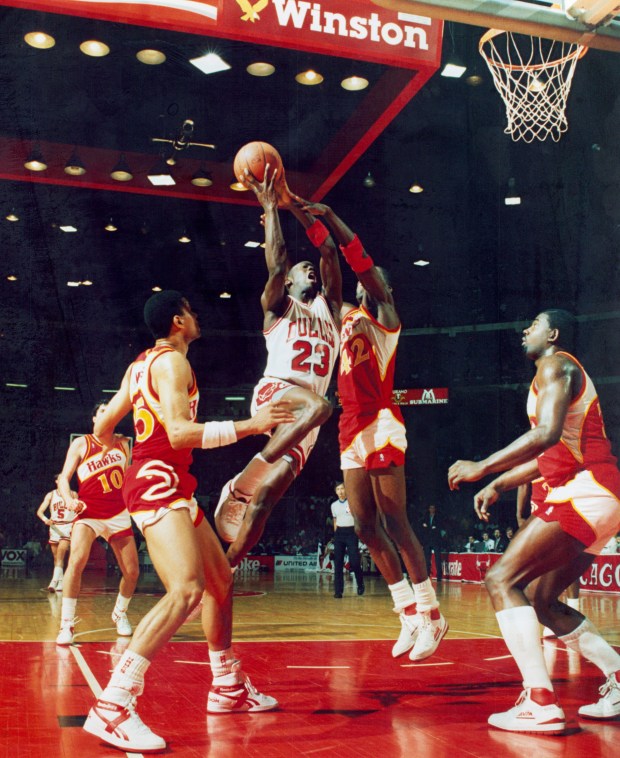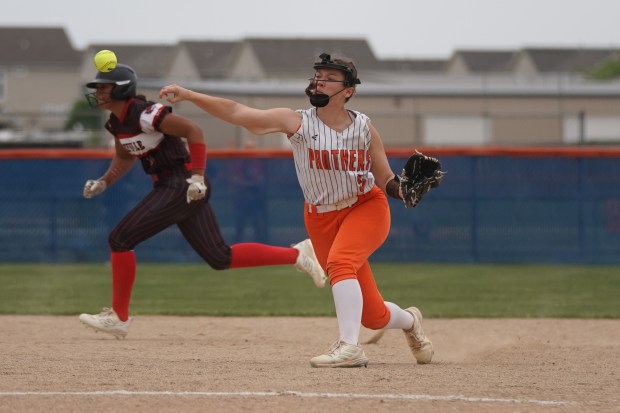Here’s a look back at what happened in the Chicago area on April 16, according to the Tribune’s archives.
Is an important event missing from this date? Email us.
Weather records (from the National Weather Service, Chicago)
- High temperature: 87 degrees (2002)
- Low temperature: 18 degrees (1875)
- Precipitation: 1.97 inches (1921)
- Snowfall: 5.4 inches (1961)
1948: Just days after signing on the air for the first time, WGN-Ch. 9 broadcast its first Major League Baseball game. The Chicago White Sox beat the Cubs 4-1 at Wrigley Field.
Cubs games continued to be shown on WGN until the Marquee Sports Network debuted on Feb. 22, 2020, with a glitch-marred broadcast of a Cactus League spring training game. The Ricketts family, who own the team, had talked about the Cubs launching their own TV channel since acquiring the team from Tribune Co. in 2009, if not before.

1961: The Chicago Blackhawks won their third Stanley Cup and first since 1938. They beat the Detroit Red Wings, but couldn’t get a flight out after because they were snowed in. Owner Jim Norris invited the team back to his Detroit hotel to party. He had one stipulation: “Bring along the Cup.”

1968: Rufus Stokes, an inventor who once worked as a security guard to support himself, earned a U.S. patent for his exhaust purifier. Stokes said independent testing firms found his invention to be 100% efficient. The U.S. Environmental Protection Agency, however, would not endorse its use, and Stokes and EPA officials had a decadelong dispute over the device. Stokes mounted his invention on a truck and took it around for demonstrations to businessmen, politicians, government officials and colleges.
Vintage Chicago Tribune: Inventions and innovations by Black Chicagoans
In 1979, someone stole Stokes’ mobile smoke elimination system. The even greater tragedy, said his son, is that the death of Stokes, who had worked in creating incinerator devices for more than 25 years, was apparently caused by his exposure to asbestos in his work.

1987: After dropping 61 points in a loss to the Atlanta Hawks, Michael Jordan became the only player other than Wilt Chamberlain to score more than 3,000 points in a season. He also set a league record by scoring 23 straight points in the game and became the second player (after Chamberlain) to score 50 points or more in three consecutive games.
“I certainly would have traded the 61 points for a win,” Jordan said after the game.

1997: While he was serving a five-year sentence after his conviction for having sex with an underage intern, former U.S. Congressman Mel Reynolds was convicted on 15 federal counts of bank and campaign fraud.
The Dishonor Roll: Meet the public officials who helped build Illinois’ culture of corruption
President Bill Clinton commuted Reynolds’ fraud sentence in 2001, with two years remaining to be served. Following his release, Reynolds tried repeatedly to regain his congressional seat.
Want more vintage Chicago?
Subscribe to the free Vintage Chicago Tribune newsletter, join our Chicagoland history Facebook group, stay current with Today in Chicago History and follow us on Instagram for more from Chicago’s past.
Have an idea for Vintage Chicago Tribune? Share it with Kori Rumore and Marianne Mather at krumore@chicagotribune.com and mmather@chicagotribune.com




